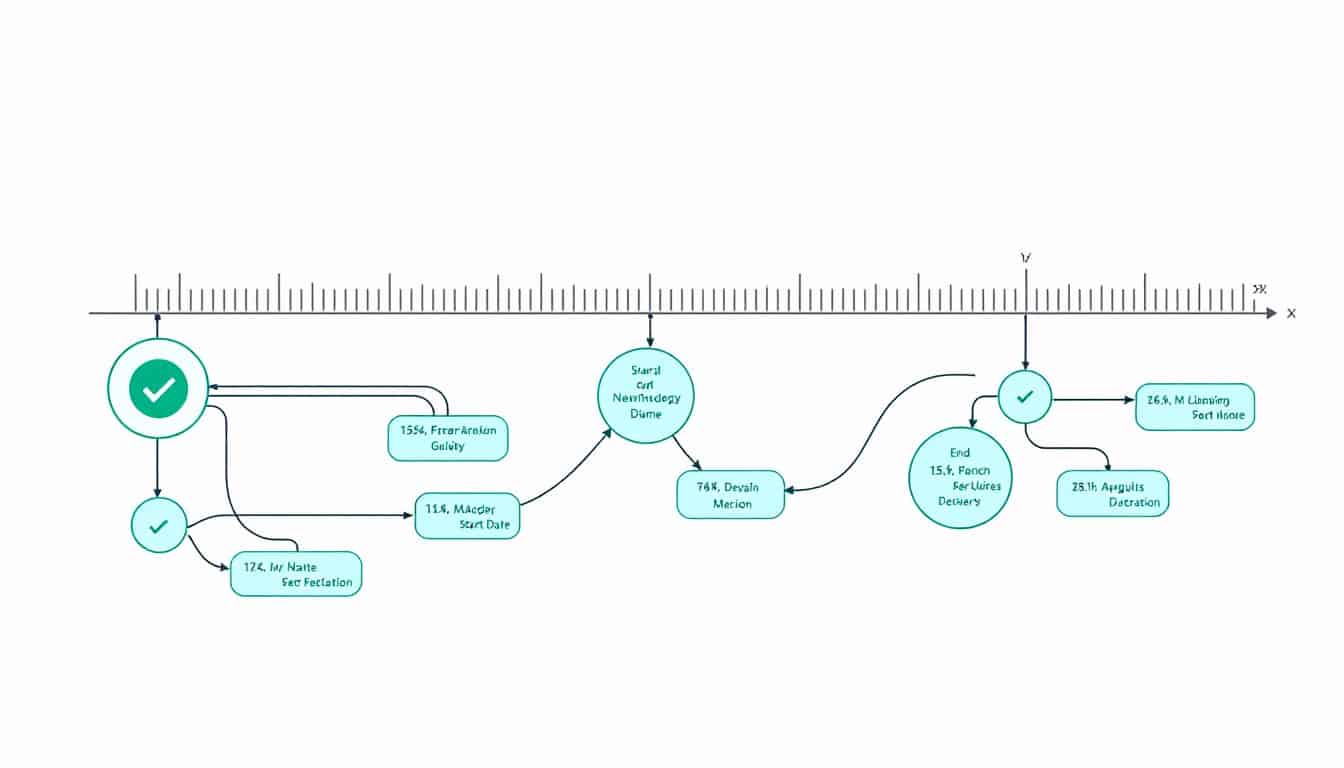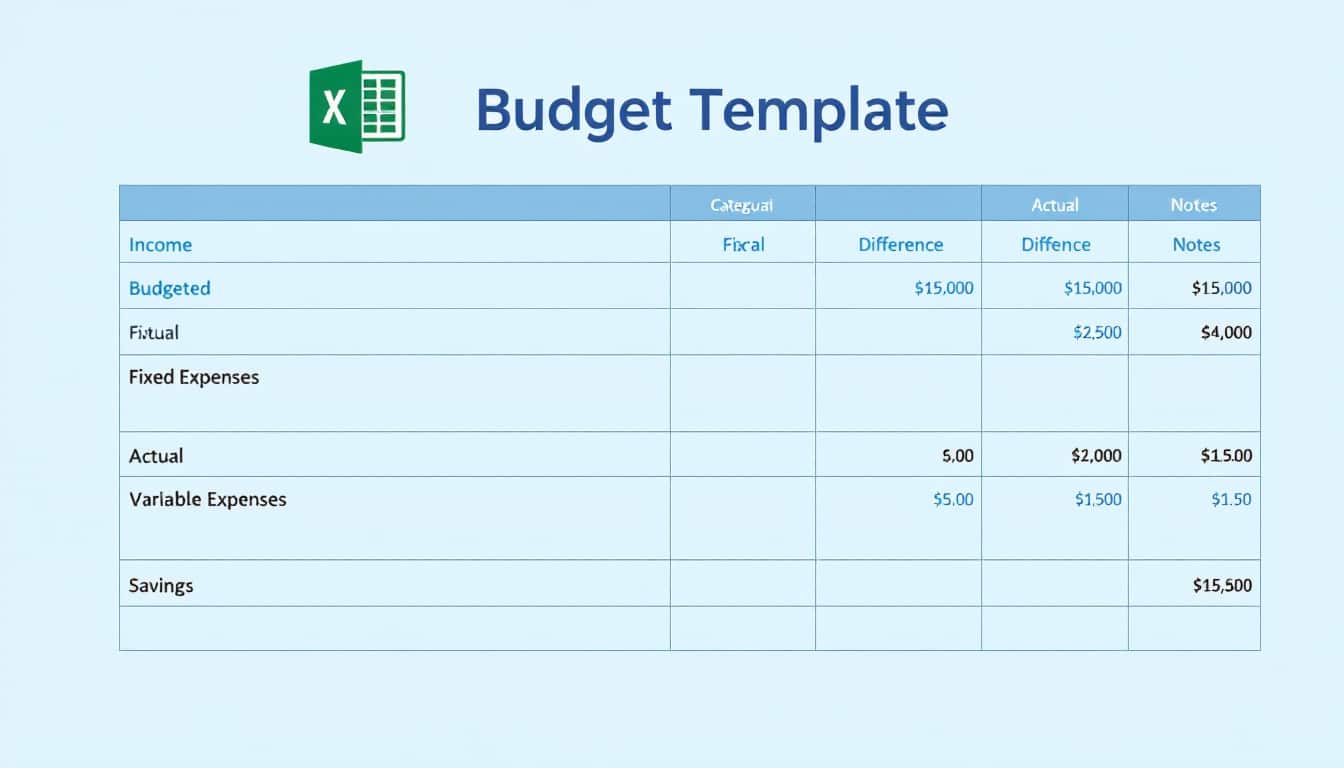Effectively managing a workforce can seem like a real challenge. Ensuring the engagement and productivity of every employee requires constant attention. A single recruitment mistake can significantly impact the overall performance of the company.
In this dynamic environment, workforce management becomes essential to maintain a balance between the needs of the business and the capabilities of its employees. Whether you are in the IT, construction, or retail sector, mastering the fundamentals of human resource management can transform your organization. Strategic planning not only optimizes schedules but also maximizes the efficiency of each team member. By tailoring tasks to the specific skills of each individual, you foster a harmonious and productive work environment. Moreover, good workforce management contributes to reducing operational costs while increasing employee satisfaction. Explore the different facets of human resource management and discover how it can propel your business to new heights.
🔥 Nous recommandons Ideamap
Ideamap est l’outil idéal pour un brainstorming ou un projet collaboratif. Grâce son interface facile et à ses fonctions IA, Ideamap booste votre créativité tout en favorisant une meilleure organisation de vos idées pour atteindre vos objectifs.
What exactly is a workforce?
A workforce represents all the people employed or available to work within a specific context, such as a company, organization, industry, or geographical area. It constitutes the available human capital for productive activities within a defined framework. In project management, the workforce includes all personnel bringing their skills, time, and efforts to achieve the project’s objectives, including team members, experts, contractors, consultants, and support staff.
What is workforce management?
Workforce management is the process of planning your staff’s schedules in the most optimal way possible to ensure that your workforce operates at its maximum productivity level. It is not just a unique management style but rather a comprehensive process or team management software solution implemented from the ground up.
Key components of workforce management
Workforce management aims to ensure that the right people with the right skills are in the right place at the right time. This allows tasks to be performed efficiently and cost-effectively. Key elements include legal compliance, compensation management, workforce planning and forecasting, as well as attendance and absence tracking. By integrating these components, you can anticipate future needs, balance supply and demand, and ensure proper task allocation.
The benefits of workforce management
Effective workforce management aims not only to improve employee efficiency but also to value them by assigning them to tasks for which they are best suited. This improves customer service, increases production, and boosts company profits. Additionally, with the rise of the gig economy, good workforce management helps reduce financial stress for workers, leading to better overall productivity.
Workforce management tools
Workforce management software solutions can be installed on-premises, hosted in the cloud, or accessed via a SaaS model. While many companies still use Excel spreadsheets, specialized tools such as customer relationship management (CRM) systems, ERPs, and project management tools are gaining popularity. These tools facilitate scheduling, time tracking, cost analysis, and report generation, providing an overview of your workforce’s performance.
Conclusion
A proactive and well-structured management of your workforce is a major asset for any company seeking to optimize its performance and ensure employee satisfaction. Investing in the right tools and processes can transform your organization and prepare it to confidently face future challenges.

What is human resource management?
Human resource management (HRM) is an essential discipline within any organization, aimed at optimizing human potential to achieve business objectives. It encompasses a set of practices and processes designed to attract, develop, motivate, and retain talent. HRM is not limited to the simple administrative management of staff; it also concerns employee wellbeing, professional development, and the creation of a work environment conducive to performance.
At the heart of HRM is the understanding of employees’ needs and the company’s ability to respond effectively. This includes recruitment management, where it is crucial to select candidates with the necessary skills and qualities to contribute positively to the organization. Poor recruitment management, such as hiring a lazy colleague, can harm the team’s overall productivity. To learn more about this topic, check out this article on strategies for managing a lazy colleague.
HRM also involves continuous training and development of employees. By investing in training, companies ensure that their personnel have the necessary skills to adapt to market changes and new technologies. Furthermore, performance management allows for regular evaluation of employee contributions and provides constructive feedback, thereby promoting their professional growth.
Moreover, HRM plays a crucial role in creating and maintaining a positive corporate culture. A healthy and motivating work environment contributes not only to employee satisfaction but also to their retention, thus reducing turnover rates and costs associated with recruiting and training new talent.
Finally, human resource management also encompasses legal and regulatory compliance. Companies must ensure that they adhere to labor laws, such as rules regarding employment contracts, working conditions, and safety standards, in order to prevent disputes and ensure a fair work environment for all employees.
Why is human resource management crucial for a company?
Human resource management is crucial for a company because it directly influences overall performance and competitiveness in the market. Effective HRM maximizes employee output, improves job satisfaction, and fosters a positive corporate culture. This translates into better productivity, reduced turnover costs, and an increased ability to attract new talent.
Firstly, good human resource management contributes to aligning individual employee goals with those of the company. By clearly defining expectations and providing the necessary tools to achieve these goals, employees are more motivated and engaged in their work. This fosters better team cohesion and effective collaboration, essential elements for the success of projects and strategic initiatives.
Secondly, HRM plays a key role in talent management. By identifying and developing employees’ skills, companies can anticipate future workforce needs and adapt quickly to market changes. For example, using free project portfolio management templates can help managers efficiently organize resources and prioritize the most impactful initiatives.
Moreover, human resource management is essential for maintaining employee satisfaction and retention. Satisfied employees are less likely to leave the company, which reduces costs associated with recruiting and training new employees. A positive work environment, combined with opportunities for professional development, encourages employees to stay and contribute long-term to the company’s success.
Finally, HRM ensures legal compliance and reduces the risks associated with disputes. By ensuring adherence to labor laws and implementing clear internal policies, companies can avoid legal penalties and maintain a positive reputation in the market. This strengthens the trust among employees, customers, and business partners, which is essential for the company’s growth and sustainability.
What are the key elements of human resource management?
Human resource management relies on several key elements that, together, optimize employee and organizational performance. These elements include workforce planning, recruitment and selection, training and development, performance management, compensation and benefits, as well as employee relations management.
Workforce planning involves anticipating staff needs based on the company’s strategic objectives. This entails analyzing current employee skills, identifying gaps, and forecasting future needs in terms of recruitment or internal development. Effective planning ensures that the company has the necessary talent to achieve its objectives and adapt to market changes.
Recruitment and selection are crucial processes for attracting and choosing the best candidates. This includes defining job profiles, posting job offers, selecting applications, and conducting interviews. The objective is to find employees who not only possess the required skills but also fit well within the corporate culture.
Training and development aim to improve employees’ skills and knowledge. By investing in continuous training, companies ensure that their personnel stay updated with the latest trends and technologies in their industry. This also promotes employees’ career progression, thus increasing their engagement and satisfaction.
Performance management involves regularly evaluating employee performance and implementing improvement plans. Tools such as performance reviews, continuous feedback, and SMART objectives (Specific, Measurable, Achievable, Realistic, Timely) allow tracking progress and recognizing employee contributions.
Compensation and benefits are also essential aspects of HRM. A fair and competitive compensation policy, combined with attractive benefits, contributes to employee motivation and retention. This includes salaries, bonuses, health insurance, paid leave, and other non-monetary benefits.
Finally, employee relations management focuses on maintaining a harmonious and productive work environment. This involves resolving conflicts, promoting open communication, and fostering an inclusive and respectful corporate culture. Good relations management contributes to creating a climate of trust and collaboration, essential for employee wellbeing and the company’s success.
How does technology improve human resource management?
The integration of technology into human resource management has revolutionized how companies manage their personnel. Digital tools and specialized software provide effective solutions to automate administrative tasks, improve communication, and optimize decision-making.
For example, cloud-based human resource management (HRM) systems allow managers to easily access employee information, track performance, and manage time sheets in real time. These solutions also facilitate collaboration among different teams and departments, thereby improving operational efficiency.
Another key aspect is the use of HR data analytics tools. These tools enable the collection and analysis of data on various aspects such as turnover rates, employee satisfaction, performance, and training needs. Through these analyses, decision-makers can identify trends, anticipate potential issues, and implement proactive strategies to improve personnel management.
Moreover, technology has simplified the recruitment and selection process. Online recruitment platforms, automated testing, and applicant tracking systems (ATS) allow for quickly filtering candidates, scheduling interviews, and tracking applicants’ progress. This reduces the time and resources needed to hire new talent while increasing the accuracy of the selection process.
Employee training and development have also benefited from digital transformation. E-learning platforms and training management tools offer flexible and accessible resources for skill development. Employees can take online courses at their own pace, facilitating continuous learning and adaptation to new professional requirements.
Finally, technology plays a crucial role in performance management. Performance management software enables clear goal-setting, provides real-time feedback, and tracks employee progress. These tools facilitate objective and continuous performance evaluation, thereby encouraging constant improvement and recognizing individual contributions.
For effective management of projects related to human resources, utilizing free project portfolio management templates can prove particularly useful. These tools allow for planning, organizing, and tracking HR initiatives in a structured manner, thus ensuring successful implementation of human resource management strategies.
What are the benefits of managing human resources well?
Effective human resource management brings numerous benefits both for employees and for the company itself. Among the main advantages are better productivity, increased employee satisfaction, reduced turnover, improved corporate culture, and enhanced legal compliance.
First, good human resource management optimizes productivity by ensuring that the right people are placed in the right positions. By aligning employee skills with the needs of the company, HRM maximizes efficiency and minimizes inefficiencies. Additionally, by offering tailored training and development opportunities, employees are better equipped to perform their tasks effectively.
Next, employee satisfaction is significantly improved through careful management of their needs and professional aspirations. A positive work environment combined with adequate recognition of performance contributes to creating a climate of trust and motivation. Satisfied employees are more engaged, which translates into better work quality and greater loyalty to the company.
Another major advantage is the reduction of turnover. By investing in talent retention and providing attractive working conditions, HRM helps decrease staff turnover. This reduces costs associated with recruitment, training, and integrating new employees while maintaining operational continuity within the company.
Furthermore, effective human resource management contributes to improving corporate culture. By defining clear values, encouraging collaboration, and fostering an inclusive environment, HRM helps create a strong and coherent corporate identity. A positive corporate culture not only attracts talent but also reinforces the commitment and loyalty of current employees.
Finally, legal compliance is a crucial advantage of good human resource management. By ensuring adherence to labor laws and regulations, companies avoid legal disputes and potential penalties. Rigorous management of legal aspects also protects the company by ensuring a fair and secure work environment for all employees.
Moreover, with the emergence of new work dynamics such as employee health management, modern HRM adapts to meet current needs. By utilizing technological tools and innovative strategies, companies can better support their employees, thereby improving overall performance and organizational resilience.
Current needs and challenges in human resource management
Human resource management faces numerous challenges in the current context, marked by rapid changes in the labor market, evolving employee expectations, and the increasing integration of technology. Understanding these needs and challenges is crucial for developing tailored and effective HR strategies.
One of the main challenges is managing diversity and inclusion. Companies must not only recruit a diverse workforce but also create an environment where every employee feels valued and respected. This involves non-discrimination policies, awareness programs, and initiatives aimed at promoting equal opportunities. Successful diversity management fosters innovation and enriches corporate culture by integrating different perspectives and experiences.
Another major challenge is adapting to new forms of work, such as remote work and flexible contracts. The COVID-19 pandemic accelerated this trend, making it essential for HR managers to implement appropriate policies and tools to support remote employees. Managing remote work includes aspects such as effective communication, time management, data security, and maintaining employee engagement.
The digitization of HR processes also represents a challenge but simultaneously offers significant opportunities. The integration of advanced software for performance management, recruitment, and training allows for the automation of many administrative tasks, freeing up time to focus on higher-value activities. However, implementing these technologies requires investments in time and resources, as well as adequate training for employees.
Furthermore, managing employee wellbeing has become a priority. Companies increasingly recognize the importance of employees’ mental and physical health for their productivity and satisfaction. Establishing wellbeing programs, offering psychological support, and promoting a healthy work-life balance are essential for attracting and retaining talent.
Finally, the skills shortage in certain sectors represents a significant challenge. Companies must not only identify the key skills needed to remain competitive but also develop strategies to attract and retain these talents. This can include continuous training programs, partnerships with educational institutions, and career development initiatives.
To overcome these challenges, companies can rely on specialized tools and resources, such as project breakdown structures to better organize HR initiatives. By adopting a proactive approach and continuously adapting to changes, human resource management can not only address current challenges but also turn these obstacles into opportunities for growth and innovation.
Best practices for effective human resource management
To ensure effective human resource management, it is essential to implement a set of best practices that promote performance, employee satisfaction, and compliance with legal standards. Here are some key practices to adopt:
1. Develop an HR strategy aligned with the company vision: The HR strategy must be in line with the long-term goals of the company. This involves understanding skills needs, anticipating market changes, and planning talent development accordingly.
2. Use integrated management tools: Adopting human resource management software allows for data centralization, process automation, and improved decision-making. For example, using free project portfolio management templates can help organize HR initiatives in a structured and efficient manner.
3. Promote open and transparent communication: Encouraging two-way communication between managers and employees fosters a climate of trust and collaboration. This also helps to quickly detect and resolve potential issues.
4. Invest in training and development: Offering continuous training opportunities helps employees develop their skills and adapt to changes. This also contributes to their engagement and job satisfaction.
5. Implement performance management systems: Regular evaluations and constructive feedback help track employee progress, identify areas for improvement, and recognize individual contributions. This reinforces motivation and encourages excellence.
6. Ensure legal compliance: Adhering to labor laws and regulations is essential to avoid disputes and maintain a fair work environment. This includes managing contracts, compensation, working conditions, and employee safety.
7. Promote employee wellbeing: Implementing wellbeing programs, offering attractive benefits, and encouraging a healthy work-life balance are effective strategies to improve employee satisfaction and retention.
8. Encourage diversity and inclusion: Promoting a diverse and inclusive work environment enriches corporate culture and fosters innovation. This involves establishing non-discrimination policies, awareness programs, and initiatives to support underrepresented groups.
By adopting these best practices, companies can not only improve their human resource management but also strengthen their competitive position and ensure sustainable growth. Proactive and well-structured human resource management contributes to creating a resilient organization capable of adapting to challenges and seizing opportunities in a constantly evolving environment.
The impact of human resource management on organizational performance
Human resource management has a direct and significant impact on the overall performance of an organization. By optimizing the management of human capital, companies can improve their efficiency, innovate further, and meet their strategic objectives more successfully.
Effective human resource management enables the development of a competent and motivated workforce, which is essential for achieving the company’s objectives. Well-trained and engaged employees are more productive, take initiatives, and actively contribute to problem-solving, thereby strengthening organizational performance.
Moreover, good human resource management fosters innovation by creating an environment where new ideas are encouraged and valued. Companies that invest in developing their employees’ skills and promoting a culture of innovation benefit from a greater ability to adapt to market changes and remain competitive.
Another important aspect is the reduction of turnover. Effective human resource management that focuses on employee satisfaction and wellbeing lowers the staff turnover rate. This not only reduces costs associated with recruiting and training new employees but also maintains continuity in projects and operations, contributing to better overall performance.
The impact of HRM is also reflected in the quality of customer service. Motivated and well-trained employees provide better service, which improves customer satisfaction and enhances brand loyalty. A positive relationship between employees and customers is crucial for the company’s reputation and long-term success.
Furthermore, human resource management plays a crucial role in managing organizational change. When a company undergoes transformation periods, such as mergers, acquisitions, or reorganizations, effective HRM facilitates the transition by managing the human aspects of change. This includes transparent communication, employee support, and resistance management, which minimizes disruptions and maintains operational performance.
Finally, HRM influences the company’s financial performance. By optimizing the use of human resources, companies can reduce operational costs, increase productivity, and improve profitability. Well-designed HR strategies, such as effective performance management and workforce planning, contribute to more efficient resource management and optimal talent allocation.
In summary, effective human resource management is a strategic lever that positively influences all aspects of organizational performance. By investing in the development and wellbeing of employees, companies can build a strong, innovative, and high-performing organization capable of thriving in a competitive environment.
Future trends in human resource management
Human resource management is constantly evolving, influenced by technological advancements, demographic changes, and new employee expectations. Anticipating these trends is essential for companies wishing to remain competitive and attractive in the labor market.
One of the main trends is the increasing adoption of artificial intelligence (AI) and automation in HR processes. AI tools can analyze large amounts of data to predict recruitment needs, identify hidden talents, and personalize training paths. For example, using advanced software for performance management allows for real-time feedback and adjustment of objectives based on individual and collective performance.
Remote work and hybrid work will also continue to shape human resource management. Companies will need to develop new strategies to maintain team cohesion, ensure effective communication, and manage the performance of remote employees. This includes adopting online collaboration tools, implementing flexibility policies, and promoting a culture of trust and autonomy.
Diversity and inclusion will become even more important priorities. Companies will seek to create more inclusive work environments by implementing awareness programs, promoting equal opportunities, and fostering diversity in all its aspects. A diverse workforce is not only beneficial for innovation, but also reflects companies’ values of social responsibility.
Furthermore, employee wellbeing will continue to be a major priority. Companies will invest in mental health programs, physical wellbeing initiatives, and policies promoting a healthy work-life balance. Recognizing the importance of wellbeing for productivity and employee satisfaction will encourage companies to adopt more holistic approaches to human resource management.
Soft skills will also gain importance. Skills such as communication, collaboration, problem-solving, and adaptability will be increasingly valued, especially in a constantly evolving work environment. Companies will emphasize developing these skills through dedicated training and mentoring programs.
Predictive analytics will become a key tool for proactive human resource management. By using historical data and predictive models, companies will be able to anticipate employment trends, identify turnover risks, and more effectively plan training needs. This enables more informed and strategic decision-making aligned with the company’s long-term objectives.
Finally, corporate social responsibility (CSR) will increasingly integrate into human resource management. Companies will seek to align their HR practices with their commitments to sustainability, ethics, and social responsibility. This includes initiatives such as corporate volunteering, sustainable development programs, and fair employment practices.
In conclusion, human resource management is undergoing significant changes, driven by technological innovations and societal shifts. By embracing these future trends, companies can not only enhance their operational efficiency but also strengthen their attractiveness as employers of choice, capable of attracting and retaining top talent in a competitive labor market.














